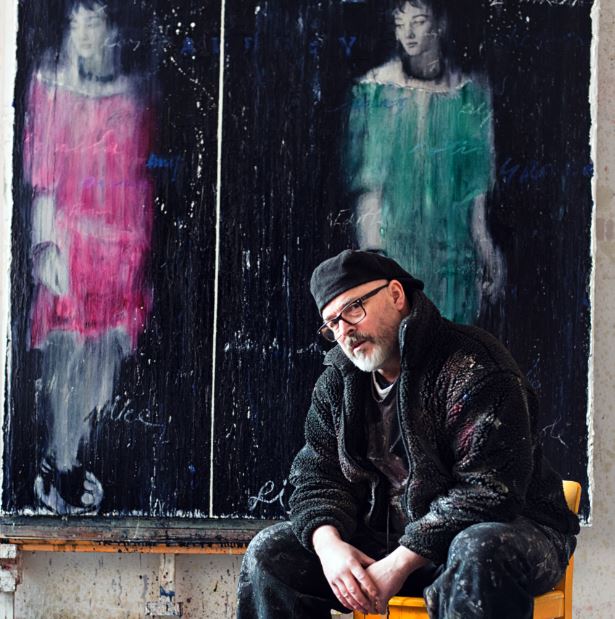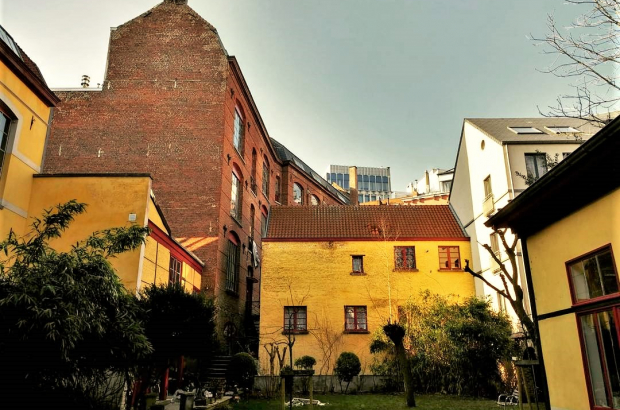- Daily & Weekly newsletters
- Buy & download The Bulletin
- Comment on our articles
'Little Montmartre': Ateliers Mommen is Brussels' last-surviving cité des artistes
You would be forgiven for not noticing the Ateliers Mommen, a beautiful ensemble of 19th century buildings, measuring almost 3000m², of which only the facade can be seen from the street.
Beyond the imposing gate lies the mews, lined with more than 30 studios. Designed with artists in mind, they feature northern orientation and large bay windows. At the centre lies a small garden, an oasis of calm at the crossroads of residential Saint-Josse-ten-Noode, the EU institutions and the Royal Quarter.
The Ateliers Mommen is the last of the 19th-century cité des artistes still active in Brussels. Its history stretches back to 1874, when founder Félix Mommen decided that artists needed a place of free expression and creativity, while being protected from the precarious nature of their profession.
An art supplies manufacturer and patron, Mommen commissioned the construction of the ateliers as a space for artists to meet, work and enjoy good times, all in exchange for low rent. With an exhibition space also added to the building, the ateliers offered artistic control at a time when the all-powerful salons rejected new trends.
As a result, the neighbourhood attracted artists from a wide range of nationalities and disciplines, becoming known as "the little Montmartre of Brussels". Work of residents from the 19th century can be found in the nearby Charlier museum, former home of art lover and patron Henri Van Custem.
Today, the Ateliers Mommen is a registered non-profit association which seeks to continue in the spirit of the original establishment. Owned by the commune of Saint-Josse-ten-Noode, but managed by artists for artists, it serves both as an exhibition space and residential studios. With ongoing gentrification causing affordable spaces to become increasingly elusive, the ateliers provide the opportunity to develop an artistic practice amongst other creatives at a reasonable cost.
Sergine André was offered a new home for herself and her son in the wake of a large-scale natural disaster. "I was looking for a place with friendly and creative people after the January 2010 earthquake in Haiti. I submitted my file and was accepted. It allowed me to put my luggage in this extraordinary place. I would like there to be more places like this - we need art to help us live better in this brutal world, so more budgets for art."
Another resident, British artist Anthony Oliver, came across the building by chance and has been living here for the past eight years. "I’m biased, of course, but I think a place like this is vital," he tells The Bulletin.

"It’s a little bit sad to see how difficult it’s becoming to find places to do this kind of thing in and to find support for the arts community. In many ways it’s ideal working here, it’s designed for this kind of activity.”
In order to justify the continuing occupancy of the building, residents run workshops, exhibitions and events. Poet and artist Jérôme Poloczek organises a series of evenings based on literature, each featuring four or five artists who present work in different media such as film, music and readings. Living in the ateliers, he says, “gives you the strength to continue an artistic practice, because lots of artists do not make any money, so it’s really challenging.”
Details of upcoming events can be found on the Ateliers Mommen website and on Facebook.



















